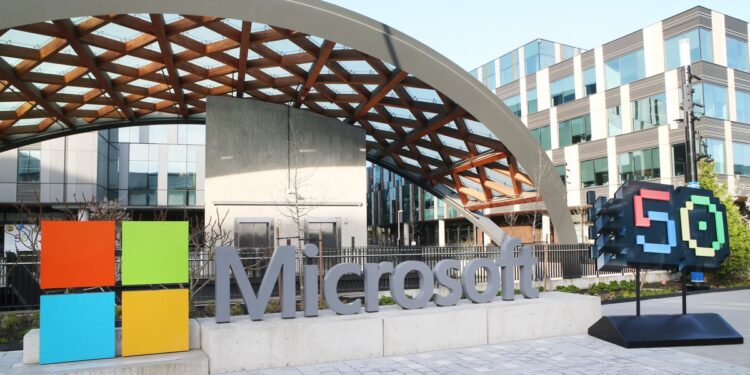Microsoft will deploy its artificial intelligence technology in every public high school and community college classroom in Washington next year as part of a $4 billion program to train the next generation of workers in AI.
Microsoft will provide Copilot tools to all 295 school districts and 34 community colleges in Washington for three years at no cost, Microsoft President Brad Smith announced Thursday at an event on the company’s Redmond campus before a group of state educators.
“We know that we need to serve this state, that we need to play a supporting role, and perhaps above all else, to do what we do best, provide technology that can be of service to this state,” Smith said.
Through the initiative, Microsoft will give thousands of students and educators statewide access to its technology, potentially creating unprecedented reliance on software from one of the world’s most valuable companies.
Starting in July, high school students will receive access to up to three years of free Copilot chat, Microsoft 365 desktop apps, and Teams for Education. A similar offer is available to community college students through November 15.
Teachers will also receive a bundle of AI tools and training through the program. Microsoft will additionally give up to 10 school districts and 10 community colleges grants of $25,000 to spend on AI agents to build for their workplace.
The donation parallels Apple’s 1983 initiative donating thousands of desktops to California schools, helping build a customer base of Apple users for years to come.
The donation comes as educators debate how to use artificial intelligence products in classrooms across all education levels. Advocates say the technology is moving toward everyday use, making it better to introduce students now rather than later. Critics argue AI can lead to students cheating and not engaging with school materials.
Smith said the company doesn’t have the answer to that debate. But as companies rush to develop the technology and it continues shifting the economy, he said the tech giant wanted to support Washington schools trying to find answers.
When asked how many school districts he thought would begin paying for continued access after the three-year donation expires, Smith didn’t have an estimate but said he hopes school districts will make AI part of their long-term future.
“I have no doubt that there’s going to be a lot of competition, not just after three years, but even in the coming year and every year, because there’s a number of companies,” he said. “The number that will choose (theirs) versus ours, I think that’s impossible (to estimate).”
The donation, Smith said, helps address what the company expects will be a changing skill set needed by employees. It also aims to bridge the divide often created by new technologies.
In Washington, more than 30% of people in the Seattle area use artificial intelligence, while that portion is less than 10% in rural counties, according to data Smith provided from Microsoft’s AI for Good Lab.
“We have so many divides already, but AI will either help us bring people together by creating more and broader opportunity for everyone, or it will exacerbate every divide we have already,” Smith said.
The initiative raises questions about educational technology procurement and vendor lock-in, where schools become dependent on specific platforms and face switching costs if they later want to change providers. After the three-year free period, school districts will need to decide whether to continue paying for Microsoft’s AI tools or seek alternatives.
Privacy and data security concerns accompany the rollout, as students and teachers will use Microsoft’s cloud-based AI systems that process user inputs. How student data will be protected and whether it will be used to train Microsoft’s AI models remains a critical question for districts to address.
The program’s scale, covering all 295 school districts and 34 community colleges, makes Washington the largest statewide deployment of educational AI tools, potentially serving as a model or cautionary tale for other states considering similar initiatives.
Teacher training will be crucial to the program’s success, as educators must learn not only how to use the AI tools themselves but also how to teach students to use them responsibly and critically evaluate AI-generated content.
The $25,000 grants for AI agent development represent Microsoft’s effort to encourage schools to create customized applications using its AI infrastructure, further deepening integration with Microsoft’s ecosystem.







